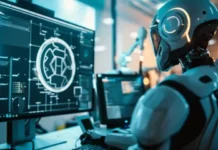Introduction to Projection Mapping
Projection mapping, also known as video mapping or spatial augmented reality, is a cutting-edge technology that allows artists and designers to transform ordinary objects or surfaces into dynamic, immersive displays. Unlike traditional projection methods that simply project images onto flat screens, projection mapping techniques involve carefully aligning projected images with the contours of three-dimensional objects, creating captivating visual illusions that can bring architecture, sculptures, and even entire buildings to life.
How Projection Mapping Works
- Mapping the Surface: The first step in projection mapping involves creating a digital map of the surface onto which the images will be projected. This process typically involves using specialized software to define the exact dimensions and contours of the object or structure.
- Calibrating Projectors: Multiple projectors are often used to cover the entire surface area effectively. Each projector must be precisely calibrated to ensure that the projected images align seamlessly with the physical features of the object.
- Creating Content: Once the surface has been mapped and the projectors calibrated, artists and designers can begin creating the content that will be projected onto the surface. This content can range from static images and videos to interactive animations and 3D effects.
Applications of Projection Mapping
- Art Installations: Projection mapping has become increasingly popular in the art world, with artists using the technique to create immersive experiences that blur the lines between reality and digital art. From large-scale outdoor installations to intimate gallery exhibitions, projection mapping offers endless possibilities for creative expression.
- Events and Entertainment: Projection mapping is frequently used to enhance live events such as concerts, festivals, and corporate presentations. By transforming stages, set pieces, and other event elements with dynamic visuals, projection mapping can elevate the overall experience for attendees.
- Advertising and Branding: Brands and advertisers are also harnessing the power of projection mapping to create memorable marketing campaigns and promotional events. Whether projecting onto buildings, vehicles, or product displays, projection mapping can capture the attention of audiences and leave a lasting impression.
- Architectural Projection: Perhaps the most iconic application of projection mapping is in architectural projection, where entire buildings serve as canvases for larger-than-life displays. Architectural projection mapping has been used to celebrate cultural events, commemorate historical milestones, and promote urban revitalization projects.
Advantages of Projection Mapping
- Immersive Experiences: Projection mapping allows audiences to immerse themselves in interactive and visually stunning environments, creating memorable experiences that engage the senses and spark the imagination.
- Flexible and Scalable: Projection mapping can be applied to objects and surfaces of various shapes and sizes, making it a versatile tool for artists, designers, and event planners.
- Dynamic Content: Unlike static signage or traditional displays, projection mapping enables dynamic and customizable content that can be updated and modified in real-time to suit different themes, messages, or audiences.
Challenges and Considerations
- Technical Complexity: Projection mapping requires specialized equipment, software, and expertise to execute successfully. Ensuring accurate mapping, precise calibration, and seamless integration with existing infrastructure can be challenging.
- Environmental Factors: Outdoor projection mapping events are subject to environmental factors such as weather conditions, ambient light, and viewing angles, which can impact the visibility and quality of the projections.
- Cost and Resources: The cost of equipment, production, and labor involved in projection mapping projects can be significant, particularly for large-scale installations or events.
Conclusion
Projection mapping represents a convergence of art, technology, and innovation, offering limitless possibilities for creative expression and experiential storytelling. From transforming everyday objects into works of art to dazzling audiences with larger-than-life architectural displays, projection mapping continues to push the boundaries of visual communication and immersive entertainment. As technology advances and techniques evolve, projection mapping will undoubtedly remain a powerful tool for captivating audiences and transforming physical spaces into dynamic canvases of light and imagination.







































